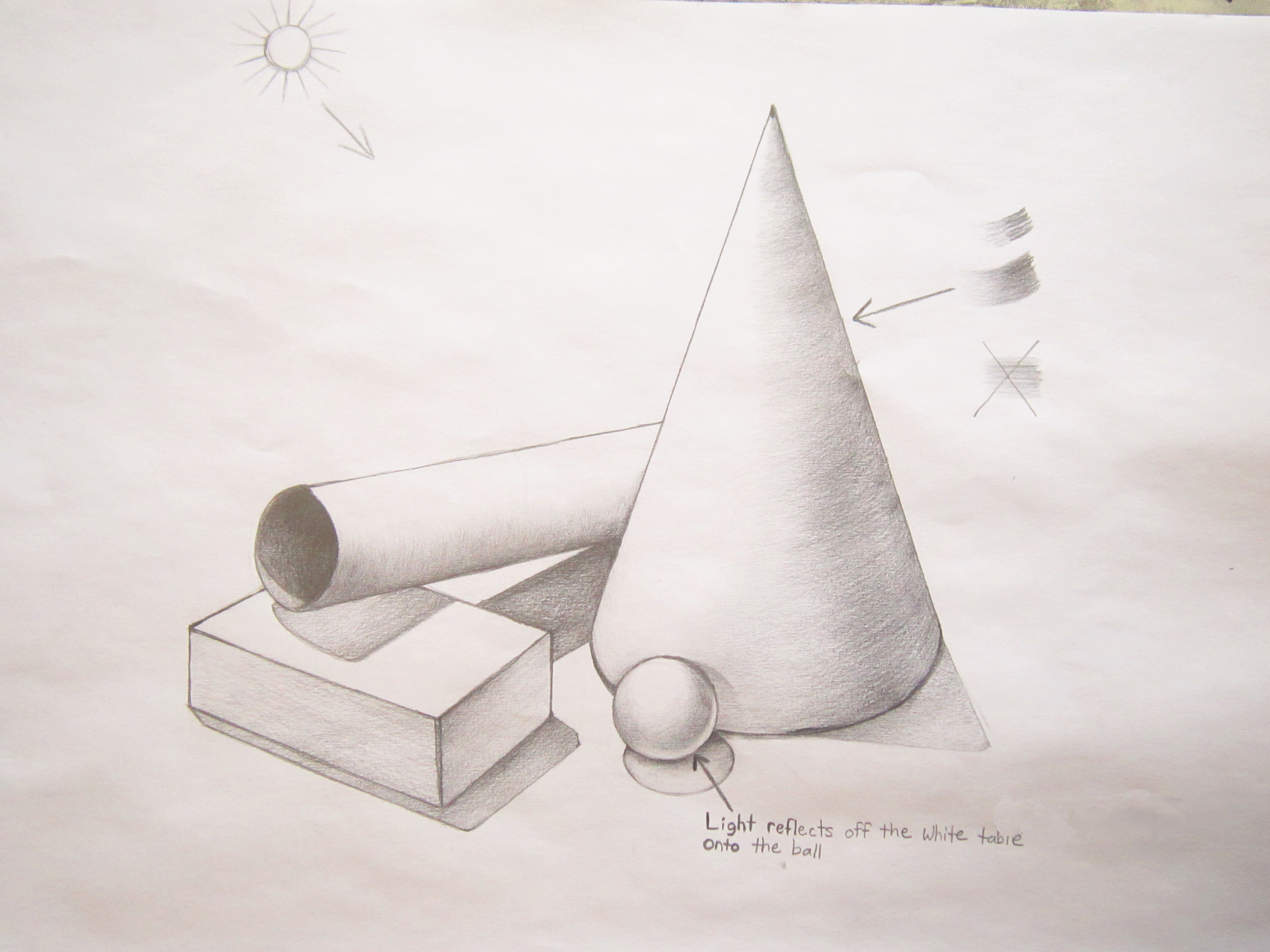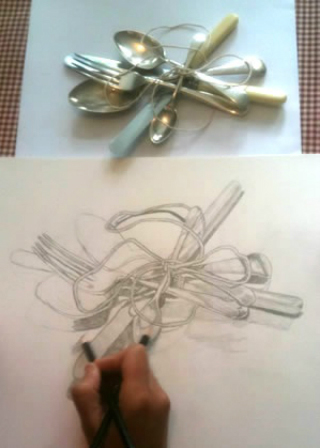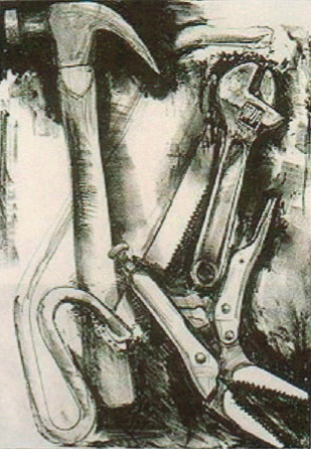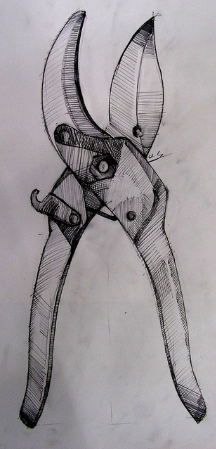



Week #5
Objectives:
This week we will be concentrating on unifying into our working compositions the elements of design that we have been discussing during the first weeks of the course. Most of the projects so far have been designed to increase your confidence and knowledge of art and design principles. There has been a minimal demand for you to take full responsibility for the composition and structure of your artworks. During the next phase of the class students will be required to work hard to utilize their powers of observation and to expand their own personal vision to include content in addition to form. It will be necessary for the student to assimilate all of the elements of design into effective compositions. In addition we will be developing our drawing skills to include the depiction of value texture and color. We will also be increasing our awareness of art historical issues with research into some of the seminal figures of this century's contemporary art.
Today we will work to use light and shadows to visually define objects. Before you can draw the light and shadows you see, you need to train your eyes to see like an artist. Values are the different shades of gray between white and black. Artists use values to translate the light and shadows they see into shading, thus creating the illusion of a third dimension. We will use hatching and crosshatching; simple and fun techniques for drawing shading. A full range of values is the basic ingredient for shading. When you can draw lots of different values, you can begin to add shading, and therefore depth, to your drawings.
Start class with drawing exercise from Drawing on the Right Side of the Brain. Discuss ways in which light can play an important role in images. Words to remember: chiaroscuro, tenebrism, value, chroma, and achromatic. We will talk of ways that light from one source can emphasis the three dimensional qualities of an object and give indications of depth in a two dimensional space. We will practice this technique and see what effect it can have on our finished drawings.
Course resources: Drawing on the Right Side of the Brain, pgs, 55-61. Upside-down drawing
Drawing on the Right Side of the Brain, pgs. 96-111
Homework: Work on your composition that utilizes receding planes as a primary method for achieving depth in a composition. This composition was started as homework for week 4 and we will continue working with that composition. Consequently this project will have greater importance in your sketchbook review. Add value to the composition you have been working on. Slowly build value into your drawing and remember to define the contours by closely observing where the lights and shadows are defined.
Course resources: The Natural Way to Draw, pgs. 14-53, images pgs 53-65
We will start work on drawing still life objects with emphasis on portrayal of light and value. Your drawings should increasingly have the appearance of three-dimensional space. Option to start using charcoal markers and ink to dramatically increase your spectrum of representational light. Value works with perspective to give a drawing the illusion of three-dimensional space. Value can also be used for compositional purposes to direct the viewer’s eye throughout the composition.
Today we will draw a still life with our predominant concern being the representation of value. Working on Black paper and with white chalk markers, draw only the light that you see reflected from the objects. Do not outline or draw the contour lines of the still life. Build up gradually the highlights and then the medium lights, let the paper represent all of the low lights and shadows.
Course resources: The Natural Way to Draw, Section 11, The Study of Drapery, pgs 107-123
Homework: Work on still life and make this as finished a drawing as you can make it. The still life will remain in the studio until Monday morning. If you believe you need to start over, I have left black paper and markers in the studio for your use.
This assignment counts toward you class participation grade and for your sketchbook evaluation.